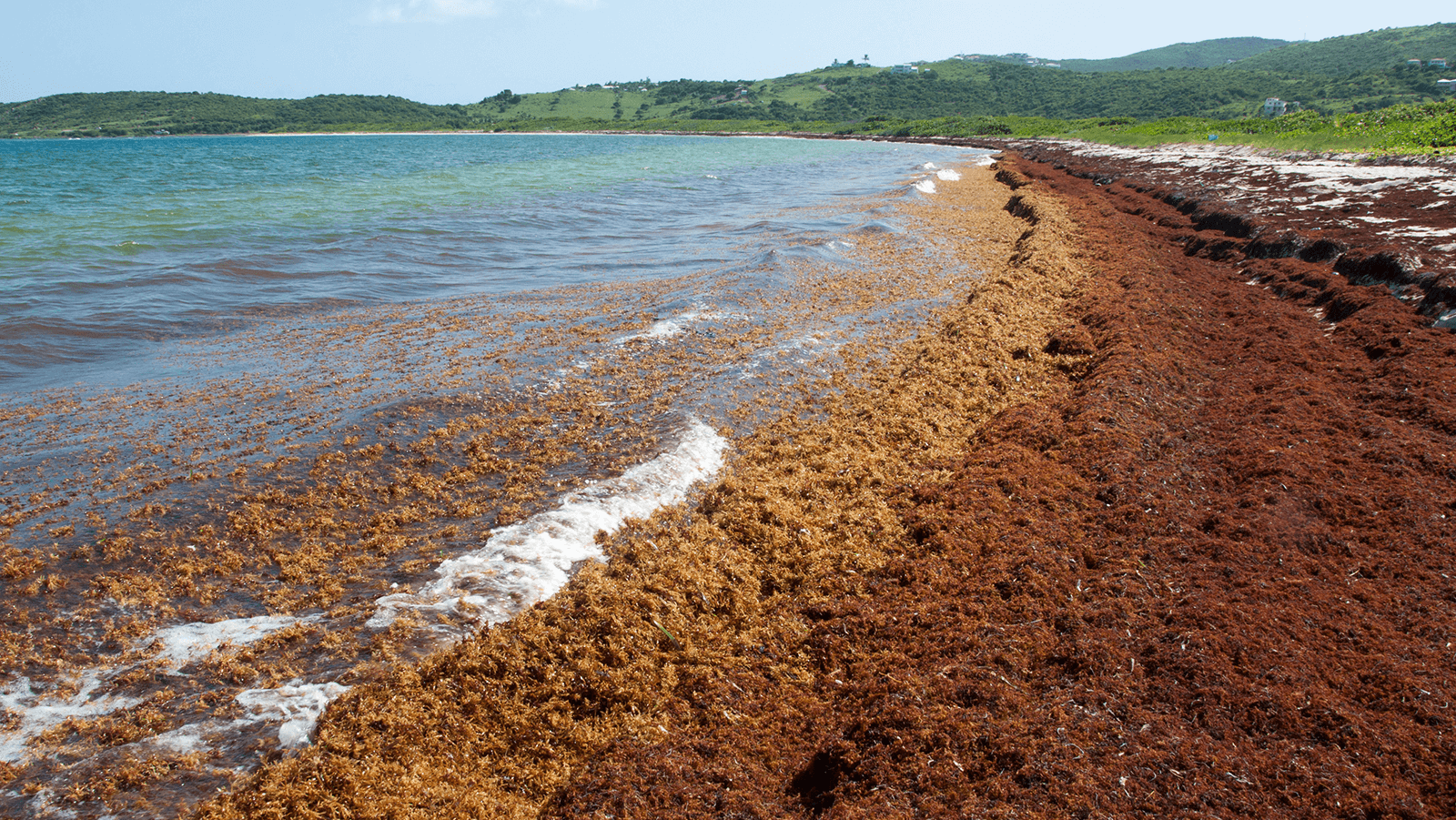
NCCOS is announcing $14.1 million in funding for harmful algal bloom (HAB) and hypoxia research projects and monitoring activities throughout U.S. coastal and Great Lakes waters.
HABs can produce toxins or cause other harmful effects that can damage ecosystems, disrupt our seafood supply, impact economies, and threaten human health. Marine and fresh waters of the U.S. are increasingly impacted by HABs, with blooms reported in every state. They cost the U.S. economy millions of dollars each year, and costs from a single major HAB event can reach tens of millions of dollars. When the algal blooms die, they sink to the bottom and decompose, consuming oxygen and causing hypoxia, or low oxygen conditions. Hypoxia has a wide range of detrimental effects on living resources, and can negatively impact commercial, subsistence and recreational fisheries.
A total of $14.1 was awarded towards new and continued competitive HAB and hypoxia research in Fiscal Year 2023: $6.1M will support 15 new awards and $8M will support 21 existing projects. Newly funded projects will advance new methods for HAB toxin measurement in seafood to prevent human illnesses; enhance HAB monitoring and response at all scales (local to national); and improve the understanding of effects of hypoxia – and potential synergies with other stressors – on marine ecosystems.
10 of the new awards aim to advance new methods for HAB toxin measurement in seafood to prevent human illnesses; and to build local, regional, and national capacity for monitoring and response through enhanced HAB monitoring by states, tribes and indigenous communities, regional observing associations, aquaculture operations, and the private sector.
- Bigelow Laboratory for Ocean Sciences, U.S. Food and Drug Administration, Washington State Department of Health Public Health Laboratory, and Maine Department of Marine Resources are receiving $223,390 to help increase the number of laboratories nationwide that can accurately quantify and monitor diarrhetic shellfish poison toxins in shellfish tissue.
- Mote Marine Laboratory is receiving $244,426 to advance new methods for detecting neurotoxic shellfish poison toxins in shellfish.
- Washington State Department of Health Public Health Laboratory and Sitka Tribe of Alaska are receiving $191,024 to expand the application of the receptor binding assay beyond mussels to determine paralytic shellfish poison contamination in other shellfish species.
- The University of Alaska Fairbanks, Kodiak Area Native Association, and SeaTox Research, Inc. are receiving $254,484 for HAB monitoring and toxin testing to support community subsistence harvesting and forecast model development.
- Old Dominion University, Virginia Institute of Marine Science and the Mid-Atlantic Regional Association Coastal Ocean Observing System are receiving $593,107 to develop a monitoring and forecasting system for Margalefidinium polykrikoides and Alexandrium monilatum in the lower Chesapeake Bay.
- The San Francisco Estuary Institute, U.S. Geological Survey, California Department of Water Resources, Central Valley Regional Water Quality Control Board, University of California Santa Cruz, the San Francisco Regional Water Quality Control Board, and Bend Genetics, LLC are receiving $789,390 to develop new technologies and establish a coordination framework for an integrated HAB detection and monitoring system across the San Francisco Estuary.
- State University of New York College of Environmental Science and Forestry, and the National Research Council Canada are receiving $565,447 to expand toxin monitoring methods to include more variants of cyanobacteria toxins in the Great Lakes
- Gloucester Marine Genomics Institute, Florida Fish and Wildlife Research Institute, and Bigelow Laboratory for Ocean Sciences are receiving $239,384 to enhance existing Pseudo-nitzschia monitoring efforts in Florida and Maine. This algal species can produce domoic acid, a potent neurotoxin.
- Woods Hole Oceanographic Institution, Florida Fish and Wildlife Commission, Bigelow Laboratory for Ocean Sciences, and Northeastern Regional Association of Coastal Ocean Observing Systems are receiving $550,125 for early warning for amnesic shellfish poisoning in the Gulf of Maine through real time in situ characterization of upstream phytoplankton blooms.
- The University of South Florida, Florida Atlantic University, Caribbean Coastal Ocean Observing System, and U.S. Virgin Islands Department of Planning and Natural Resources are receiving $648,636 for developing an operational Sargassum HAB monitoring and forecasting system for the southeastern U.S. and U.S. Caribbean waters.
Three of the new awards aim to improve the understanding of physical/biogeochemical effects of hypoxia and potential synergies with other stressors on living resources, habitats, and food webs. This information will enable proactive management to address current and future changes in habitat and species composition.
- The Virginia Institute of Marine Science and University of Maryland are receiving $212,581 for researching the synergistic effects of hypoxia and warming on zooplankton prey for higher trophic levels in coastal waters.
- University of Maryland and Mote Marine Laboratory are receiving $324,460 for investigating emerging hypoxia on the West Florida Shelf and its potential impacts on important fish species.
- Louisiana State University, Princeton University, University of Louisiana Lafayette, and U.S. Geological Survey are receiving $352,352 to study the biological vulnerability to hypoxia from climate warming and eutrophication in the Northern Gulf of Mexico.
One of the new awards will address the characterization and forecasting of coastal ecosystem responses to multiple stressors for management applications in South Florida.
- University of Miami, NOAA Atlantic and Oceanographic and Meteorological Laboratory, Florida Fish and Wildlife Research Institute, Northern Gulf Institute, Southeast Coastal Ocean Observing Regional Association, University of South Florida, and the Virginia Institute of Marine Science are receiving $499,983 to characterize and forecast coastal ecosystem responses to multiple stressors for management applications in South Florida.
In addition to the Competitive Research HAB Program awards, NCCOS is also Congressionally directed to fund one project that will examine the influence of Caloosahatchee River discharges on Florida’s coastal ecosystems health and harmful algal bloom dynamics.
- The Florida Gulf Coast University Board of Trustees is receiving $440,000 in Community-Direct Spending to examine the influence of Caloosahatchee River discharges on Florida’s coastal ecosystems health and harmful algal bloom dynamics.
A full list of the new NOAA NCCOS grant awards is available online. View the full NOAA press release online.
